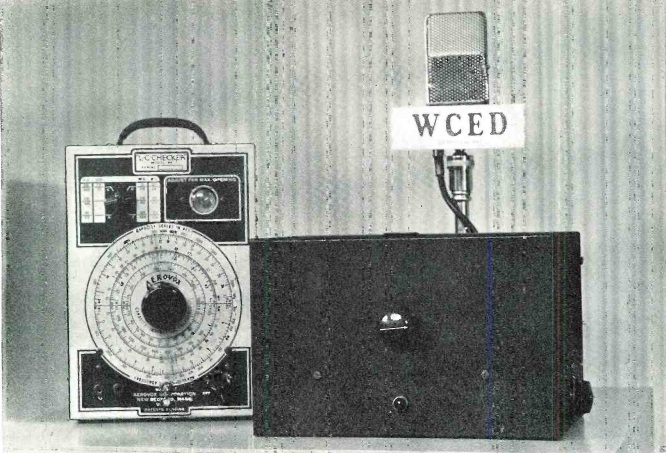 The nondescript black box shown here is a longwave receiver from the September 1942 issue of Radio News. (The instrument at the left is an Aerovox L-C checker, presumably there to show the scale.) Specifically, the receiver was part of the broadcast equipment of WCED radio in Pennsylvania, and was designed to pull in the time signals from the Naval Observatory from station NSS, Annapolis, MD, operating on 113 kHz. For a station in a place like Pennsylvania, just a few hundred miles from Annapolis, the shortwave signals were often unreliable, being in the skip zone. The longwave signals were reliable, with no fading. The Navy permitted their rebroadcast by local stations, on the condition that mechanical relays not be used, as they would add a delay to the time, which was accurate to within 1/10 second.
The nondescript black box shown here is a longwave receiver from the September 1942 issue of Radio News. (The instrument at the left is an Aerovox L-C checker, presumably there to show the scale.) Specifically, the receiver was part of the broadcast equipment of WCED radio in Pennsylvania, and was designed to pull in the time signals from the Naval Observatory from station NSS, Annapolis, MD, operating on 113 kHz. For a station in a place like Pennsylvania, just a few hundred miles from Annapolis, the shortwave signals were often unreliable, being in the skip zone. The longwave signals were reliable, with no fading. The Navy permitted their rebroadcast by local stations, on the condition that mechanical relays not be used, as they would add a delay to the time, which was accurate to within 1/10 second.
This receiver was superheterodyne, with an IF of 465 kHz. The detector was regenerative, and could copy the CW signals, which were then simply rebroadcast over the air at the top of the hour.

